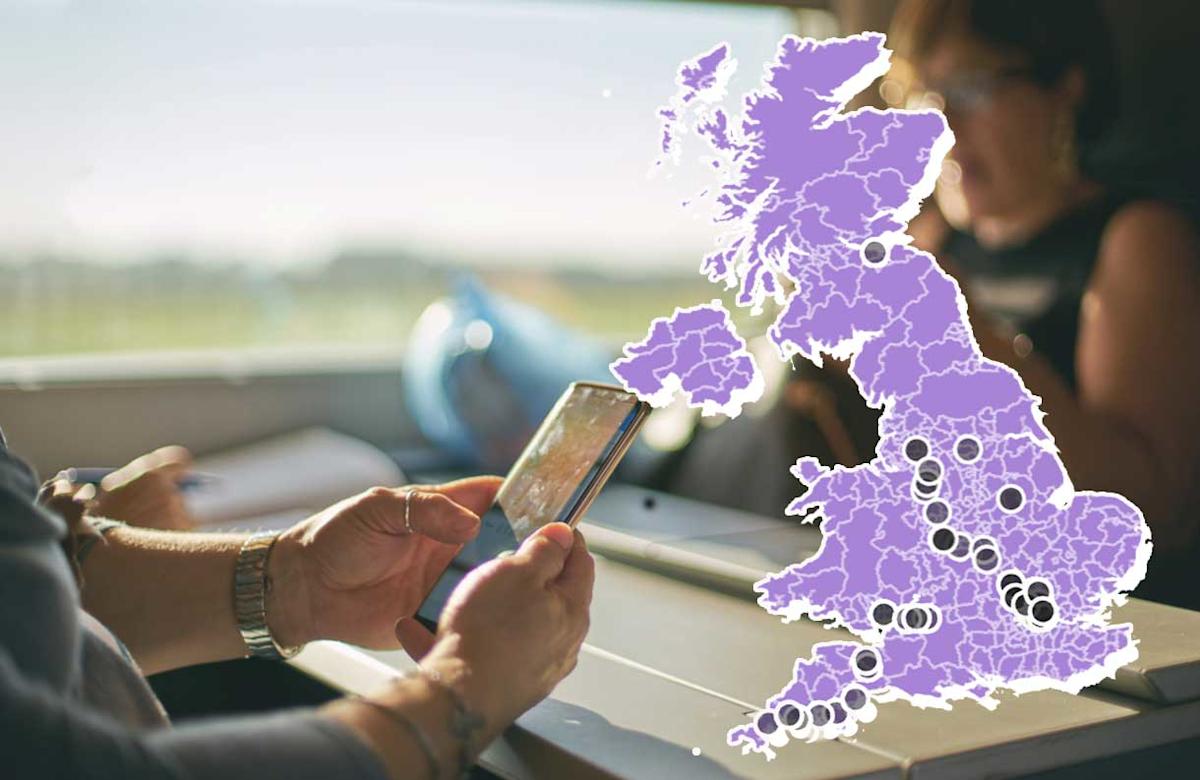By James Harrison
The government has promised to eliminate mobile phone signal blackspots on Britain’s busiest rail routes as part of a major new infrastructure project.
Dubbed ‘Project Reach’, ministers hope the package of improvements could be worth about £300m to travellers and taxpayers.
The upgrades include tackling signal blackspots in tunnels; laying fibre optic cables along existing tracks; and installing new masts and antennas at some major stations. It is hoped these will improve the quality of internet access for commuters.
The project is the government’s latest initiative to improve network coverage on the UK’s rail network after the National Infrastructure Strategy raised the prospect of enabling satellite connectivity on rail services.
Here, Yahoo News UK breaks down where the money is expected to be spent and what impact it could have.
Where are the 57 train tunnel blackspots Labour plans to improve?
The bulk of the work to improve access in tunnels, which Freshwave, an infrastructure firm, will carry out, is expected to focus on some of the UK’s biggest rail routes, including the West Coast Main Line, the Great Western Main Line and the Chiltern Main Line.
The greatest concentration of ‘not spots’ has been identified along the Chiltern Main Line, between London and Birmingham, and the West Coast Mainline, from London to Liverpool and Manchester in the North West.
Several sites have also been identified around Bristol, including the 4km Chipping Sodbury tunnel and elsewhere in the South West, particularly in Devon and Cornwall.
The most northerly area to see tunnel improvements is expected at the Calton Tunnels, outside Edinburgh, on the East Coast Mainline.
The government has promised the plans will “eliminate mobile signal blackspots in tunnels on key rail routes up and down the country”.
Click on the interactive map below to see the 57 train tunnel blackspots lined up for improvements.
Where could new fibre optic cables be laid?
Neos Networks, a telecoms firm, has been chosen to lay 1,000km of new ultra-fast fibre optic cable.
This is expected to run alongside the East Coast Mainline and parts of the West Coast Main Line and Great Western Mainline.
If the initial stages of the scheme are deemed a success, this could grow to 5,000km of cabling.
Which stations could see upgrades?
Mobile network operators are expected to pick up the bill for updates to mobile infrastructure in railway stations.
So far, 12 of the UK’s biggest transport hubs have been chosen:
Birmingham New StBristol Temple MeadsEdinburgh WaverleyEustonGlasgow CentralKing’s CrossLeedsLiverpool Lime StreetLiverpool StreetManchester PiccadillyPaddingtonWaterloo
The infrastructure plans have been largely welcomed by transport campaigners.
Bruce Williamson, of campaign group RailFuture, accepted that while the rail network is need of upgrades in lots of areas after having been “starved of investment for decades”, anything which improved the experience for travellers would be money well spent.
“I think you have to take a common sense view that it is useful – we all have smartphones, it’s a sound investment and I think most passengers will agree,” said Williamson.
“Anything within reason that makes rail travel more practical and agreeable, I think, is a good thing.”
How much is upgrading mobile phone coverage going to cost?
The final bill for the Project Reach is currently not clear, although work is expected to start next year, with the first phase of work expected to be finished by 2028.
If successful, bosses have raises the prospect of a further 3,000 miles (4,800km) worth of cabling being laid “in the near future”.
Installation is expected to be carried out by infrastructure firm Freshwave, which will recoup costs by selling bandwidth to mobile network operators such as Virgin Media O2, Vodafone or BT’s EE.
However, it is not currently clear whether this will require any taxpayers’ money to be provided upfront for work to begin.
Why is phone signal so patchy on trains?
While tunnels and other obstacles present the most obvious barrier to a strong mobile phone signal, several factors can limit your coverage while travelling.
Cuttings – rail routes which have been excavated through hills with steep slopes on either side of the tracks – can face similar problems to tunnels in receiving signal.
Train carriages themselves can also be part of the problem, with the metal used to make them a potential barrier to your phone being able connect to a mast or antenna.
And even if your device can connect successfully, the speed at which the train moves can mean your phone is constantly having to search for the next one, meaning inconsistent data speed and a major drain on battery power.
Daniel Shannon, a specialist network design expert at Vodafone UK, has compared it to “trying to thread a needle, but with only one hand while the eye of the needle is constantly moving”.
